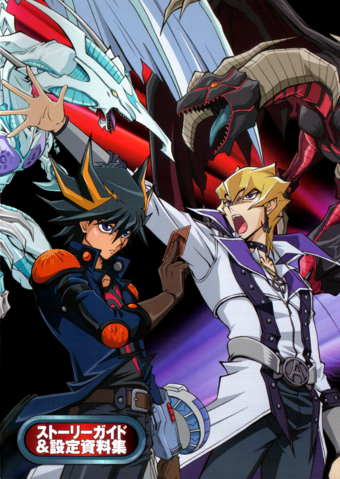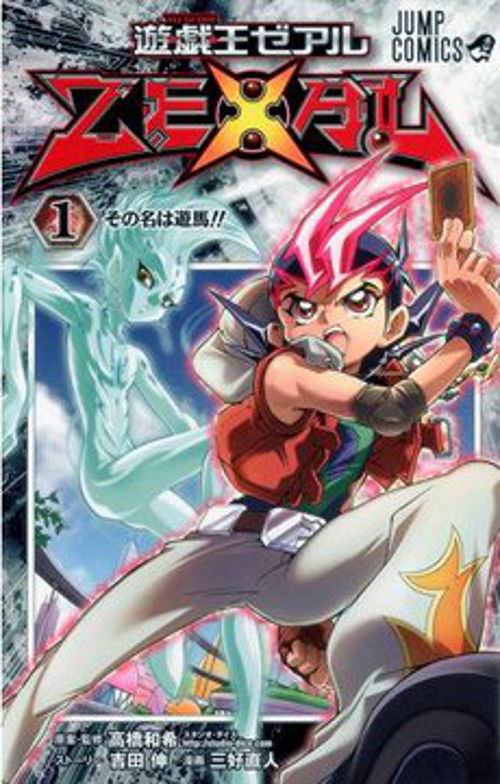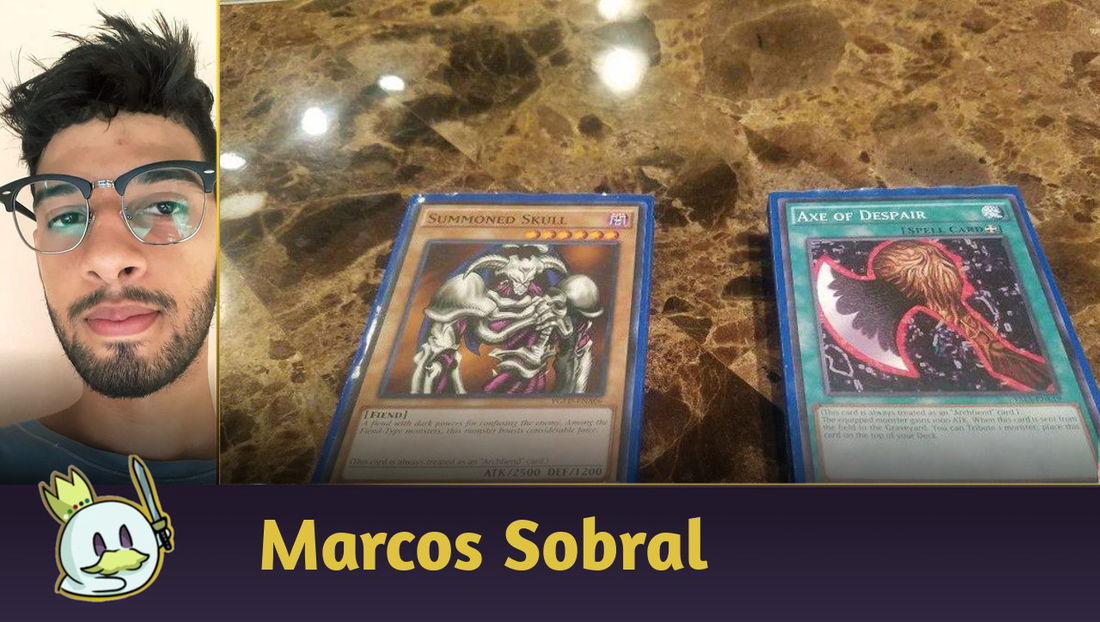Introduction
Yu-Gi-Oh! TCG has gone through many transformations throughout its 25 years. One of them was when special summons were introduced to the game. This essentially added more strategies to Yu-Gi-Oh!TCG and also redefined the style and rhythm of the game.
In this article, we'll go through how all of these mechanics evolved in these 25 years. This means we'll explore the context they were released in, how they work, how the community received them, and how they influenced the competitive scene.
Below, let's go through all the Yu-Gi-Oh! TCG "eras"!
The Fusion Era
Fusion summoning was the first special summoning mechanic released in Yu-Gi-Oh! TCG. In fact, it has been a part of the game since the very first sets. It was pretty simple at first: to use it, you had to combine 2 or more specific monsters listed in that particular Fusion monster card with a spell like Polymerization or similar.

At first, Fusion monsters weren't popular competitively because we needed at least 3 specific cards in our hand to use them. Even if we managed to do that, we'd only summon a monster that didn't give us much in return compared to the cards we needed to spend to summon it.
With time, KONAMI released more support for Fusion summons, particularly ways to use this mechanic more easily. Soon, we didn't have to use Polymerization or similar anymore, nor materials from our deck, graveyard, or banishment zone. Then, they gave us monsters that created some sort of value when we used them as material, and, finally, they gave us Fusion monsters that didn't need specific materials to enter play through fusion summoning. After that, even when new mechanics came along, Fusion summons remained relevant.
The Fusion era was when we began special summoning cards from the extra deck and also when KONAMI built the foundation for all other extra deck summoning mechanics.
The Synchro Era
Synchro summoning was officially released in 2008 in the Yu-Gi-Oh! 5D's series. This mechanic introduced a new dynamic to the game, as, to use it, we have to combine a tuner and a non-tuner monster, add their levels, and get the exact level of the Synchro monster we want to summon.

Unlike Fusion summoning, which initially needed cards like Polymerization or incredibly specific conditions to work, Synchro summoning was, from the very start, a more straightforward way to access powerful monsters. It also puts tuners in play through fast combos.
Synchro monsters significantly influenced how we build Yu-Gi-Oh! TCG decks. Since they came along, we have to consider the balance between tuners and non-tuners in our lists and how they interact with each other. The Synchro era marked the beginning of a faster, more explosive Yu-Gi-Oh! TCG. It proved to us that putting monsters in play constantly to get ahead is a critical part of the game.
The Xyz Era
Xyz summoning was released in 2011 when the Yu-Gi-Oh! ZEXAL series was airing. This mechanic changed the way we interact with monster ranks. Unlike Synchro monsters, which force us to add the levels of the monsters we use as material, Xyz monsters force us to use two or more monsters in the same rank as material to Xyz-summon them.

What sets Xyz summoning apart from the others is that your materials don't go to the graveyard when you summon them. Instead, they remain "attached" to the Xyz monster in question, and these monsters use them as resources to activate their effects, albeit while obeying a certain "restriction".
Xyz summoning might be more generic than the other summon mechanics, but, besides introducing new game styles to the game, it also made managing the resources on the board a critical part of Yu-Gi-Oh! TCG.
The Pendulum Era
Pendulum summoning was released in 2014 when the Yu-Gi-Oh! ARC-V series was airing. This summoning mechanic was as innovative as controversial, as it introduced to the game cards that can act both as monsters and continuous spells at the same time. We put them in the recently created Pendulum zones, which replaced the old spell and trap zones in the corners of the board.

Besides changing the layout of the board, Pendulum summoning gave us the ability to summon multiple monsters at once, both from our hand and from the extra deck.
Pendulum monsters start in the main deck, but they heavily interact with the extra deck, which is quite unique. They go there when they're destroyed, and, as such, we can recycle them constantly. Pendulum summoning makes the game more dynamic and explosive, but it created extremely fast, oppressive metas. Eventually, KONAMI had to change the rules and heavily restrict cards through the banlist.
The Link Era
Link summoning was released in 2017 when the Yu-Gi-Oh! VRAINS series was airing. This mechanic deeply changed the game because it brought us Master Rule 4 and changed the duel field by giving it extra monster zones.
The idea was to control how fast the game played out and avoid boards full of extra deck monsters on turn 1. Since this mechanic came along, we can only summon them in extra monster zones or in zones certain Link monsters point to.

This restriction significantly limited how much we can spam Synchro and Xyz monsters, and also prevented us from using multiple Fusion monsters at once. However, these changes didn't really slow down the game, at least not efficiently. In practice, players just started to spam Link monsters to "free" more zones (through the "pointing" mechanic) and summon extra deck monsters more freely.
In 2020, KONAMI introduced Master Rule 5 to balance this restriction. From then on, we could once again summon Fusion, Synchro, and Xyz monsters directly in the main monster zones without relying on Link monsters. Now, the restriction regarding extra monster zones and Link pointers only applies to Link and Pendulum monsters.
This change put each mechanic back in their own lane, moving at their own pace, and, as such, Yu-Gi-Oh! TCG got back part of the diversity it lost during the first few years of this era.
Coexisting in the Current META
Nowadays, all of these summoning mechanics coexist in Yu-Gi-Oh! TCG, often in the same archetype or deck. This diversity was brought on by KONAMI, which constantly put out support for them and apparently wants to keep different mechanics relevant competitively.
Many times, they created mechanics that go around the original limitations reigning over each type of summon to make them even stronger. One example are Yummy Synchro monsters, which let you use any Link-1 in play as a tuner to summon them.

Another iconic example is the aforementioned Fusion summoning, which uses materials from your deck, but Xyz summoning also only uses one monster as material. Many cards let you use monsters in your hand to summon them or even recycle monsters from the graveyard or banishment zone.
This way, besides coexisting, these mechanics complement each other in the current meta. We can all explore the best out of each of them in our decks. These interactions make the game more diverse, particularly when it comes to which summoning is more dominant in the meta.
Final Words
Did you already know all of these mechanics? What is your favorite? Tell us in our comment section below.
To learn more about the Yu-Gi-Oh! TCG universe, keep browsing our articles.
Cards Realm thanks you for your support! See you next time!












— 评论 0
, 反应 1
成为第一个发表评论的人